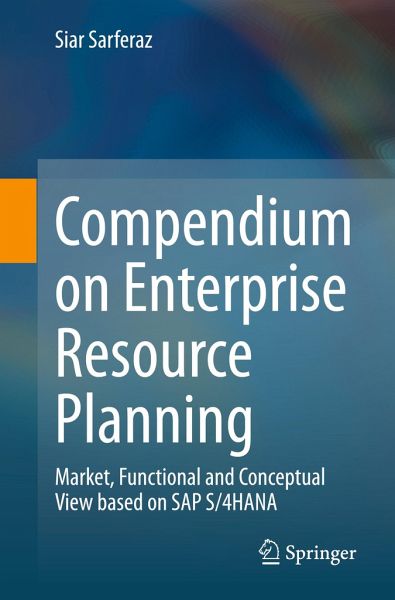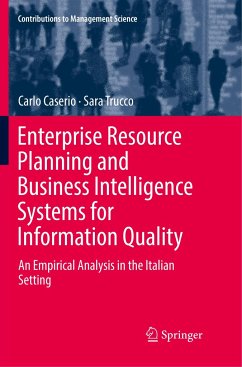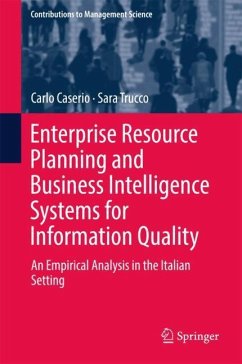
Compendium on Enterprise Resource Planning
Market, Functional and Conceptual View based on SAP S/4HANA

PAYBACK Punkte
29 °P sammeln!
This book explains the functional scope, the data model, the solution architecture, the underlying engineering concepts, and the programming model of SAP S/4HANA as the most well-known enterprise resource planning (ERP) system. The approach is to start with general concepts and then to proceed step-by-step to concrete implementations in SAP S/4HANA.In the first part the reader learns about the market view of ERP solutions and vendors. The second part deals with the business processes for sales, marketing, finance, supply chain, manufacturing, services, procurement, and human resources which ar...
This book explains the functional scope, the data model, the solution architecture, the underlying engineering concepts, and the programming model of SAP S/4HANA as the most well-known enterprise resource planning (ERP) system. The approach is to start with general concepts and then to proceed step-by-step to concrete implementations in SAP S/4HANA.
In the first part the reader learns about the market view of ERP solutions and vendors. The second part deals with the business processes for sales, marketing, finance, supply chain, manufacturing, services, procurement, and human resources which are covered with SAP S/4HANA. In the third part the underlying concepts of SAP S/4HANA are described, for example in-memory storage, analytics and search, artificial intelligence, process and data integration, security and compliance, lifecycle management, performance and scalability, configuration and implementation. The book is concluded with a final chapter explaining how to deploy anappliance to explore SAP S/4HANA.
The target audience for the book are managers and business analysts who want to understand the market situation and future ERP trends, end users and process experts who need to comprehend the business processes and the according solution capabilities provided with SAP S/4HANA, architects and developers who have to learn the technical concepts and frameworks for enhancing SAP S/4HANA functionality, and consultants and partners who require to adopt and configure SAP S/4HANA.
In the first part the reader learns about the market view of ERP solutions and vendors. The second part deals with the business processes for sales, marketing, finance, supply chain, manufacturing, services, procurement, and human resources which are covered with SAP S/4HANA. In the third part the underlying concepts of SAP S/4HANA are described, for example in-memory storage, analytics and search, artificial intelligence, process and data integration, security and compliance, lifecycle management, performance and scalability, configuration and implementation. The book is concluded with a final chapter explaining how to deploy anappliance to explore SAP S/4HANA.
The target audience for the book are managers and business analysts who want to understand the market situation and future ERP trends, end users and process experts who need to comprehend the business processes and the according solution capabilities provided with SAP S/4HANA, architects and developers who have to learn the technical concepts and frameworks for enhancing SAP S/4HANA functionality, and consultants and partners who require to adopt and configure SAP S/4HANA.














